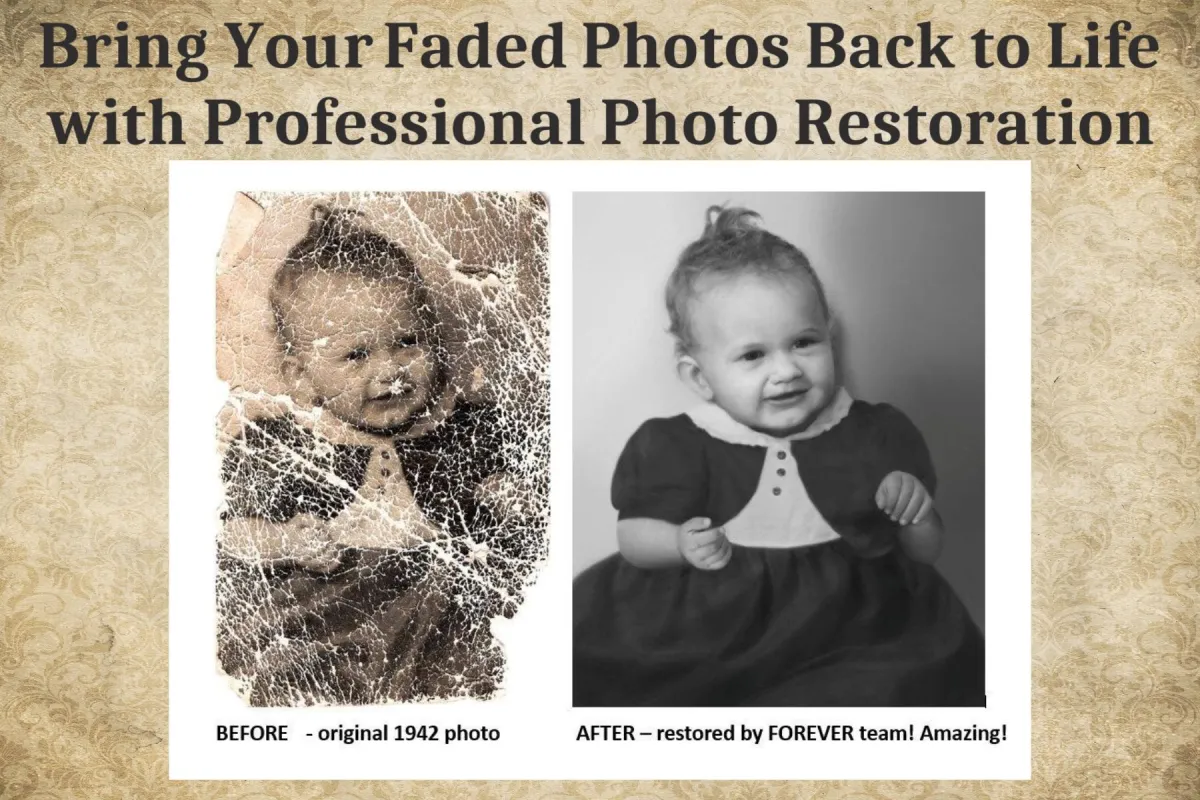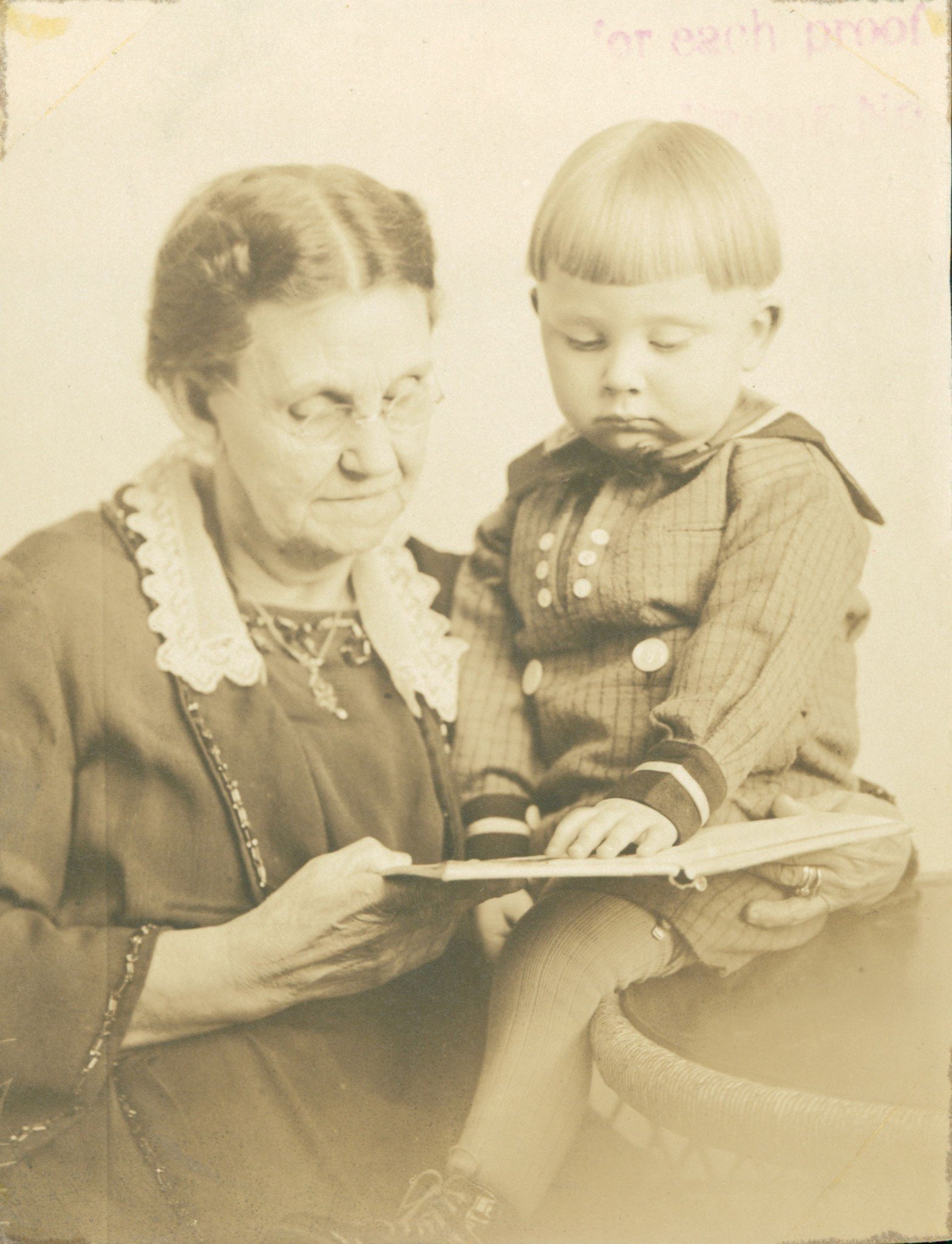


Bring Your Faded Photos Back to Life with Professional Photo Restoration
Bring Your Faded Photos Back to Life with Professional Photo Restoration
Memories captured in photos are priceless, but over time, they can become damaged, faded, or worn. Whether it’s an old family portrait or a candid snapshot from a significant moment, seeing these precious photos deteriorate can be heartbreaking. Luckily, with modern photo restoration techniques, those memories don’t have to be lost forever. Read on to explore why old photos deteriorate, the types of damage that can occur, how the restoration process works, and why digitizing restored photos is key to preserving them for generations.
Why Do Old Photos Deteriorate?
Over time, even well-preserved photos can show signs of damage. These photos are made from delicate materials that naturally break down as they age. Here are some common reasons that old photos may deteriorate:

Fading: Where have the photos been stored? Exposure to sunlight, air, and humidity can cause the vibrant colors in photos to fade. This is especially true for color photos, but even black-and-white images can lose their contrast and sharpness over time.
Tears, Rips, and Creases: How have the photos been handled and stored? Physical damage like rips, folds, and creases often happens from mishandling or improper storage. When photos are stored without proper protection, they can bend or tear easily.
Moisture and Temperature Changes: What climate have they been kept in? Humidity and fluctuating temperatures can wreak havoc on old photos. Photos stored in basements, attics, or other damp spaces can become water-stained, warped, or even develop mold.
Chemical Reactions: What kind of materials have the photos been stored with? Acidic materials, such as certain types of paper or plastic sleeves, can cause photos to yellow or become brittle. Over time, the chemicals in the paper itself can contribute to the deterioration of the image.
Each of these factors can contribute to the breakdown of your valuable photos, but the good news is that with photo restoration services, you can still preserve many photos in spite of the damage.
Common Types of Photo Damage and How to Restore Them
Different types of photo damage require different approaches to restoration. Here are the most common issues and how they can be addressed:

Faded Photos
Fading is a common issue, especially with older photos exposed to sunlight. Restoration software can adjust the brightness, contrast, and saturation levels to bring back lost details. Professional restoration tools can often recover even severely faded areas, restoring the depth and richness of the original image.Tears, Rips, and Creases
Even if your photo has physical damage, such as tears or creases, digital photo restoration can work wonders. By carefully scanning the photo and using software to “fill in” the missing pieces, professional restorers can recreate the image as if the tear never happened.Water Damage, Stains, and Mold
Water damage can lead to discoloration, stains, and even mold on old photos. Using digital restoration tools, stains can often be removed, and the overall image can be cleaned up to remove unsightly marks while preserving the original detail.Discoloration
Over time, photos can develop a yellowish or brownish tint due to the chemicals in the paper. This discoloration can be corrected digitally by balancing the color tones and restoring the original look of the photo.
How Photo Restoration Works
Photo restoration is a blend of art and technology. Here's an overview of how the process works:
Scanning the Photo
It's essential to have the damaged photo scanned at a high resolution by a professional to ensure optimal results for restoration. This creates a digital copy of the photo that can be edited and restored without further damaging the original.
Digital Editing
Using advanced photo editing software, a professional will carefully restore the image. This can involve color correction, repairing tears or cracks, removing stains, and even recreating parts of the photo that are missing.Retouching and Enhancing
In addition to repairs, many old photos can benefit from enhancements like sharpening blurry areas, improving contrast, or adding back depth to a faded image. Colorizing black & white photos or sepia-toned images is another way that photos can be enhanced. This final step helps bring the photo closer to its original state, or even better.
Digitizing and Protecting Restored Photos
Once your photos have been restored, it’s important to protect them for the long term. Digitizing images ensures that your memories are preserved in a format that won’t deteriorate further. Once digitized, you can:
Store them safely: Upload the digital versions to a secure platform like FOREVER® permanent storage to ensure they’re backed up and available for future generations.
Share with family and friends: Digital copies make it easy to share these beautifully restored memories with loved ones.
Print new copies or use in photo projects: The restored digital version can be printed to create a fresh, high-quality physical print and can be used in many photo projects such as books, calendars, and gifts.
By digitizing and restoring photos, you’re taking an extra step to protect your family’s history and ensure that these memories will never be lost again.
How to Get Started with Photo Restoration
If you have old, damaged photos that need some TLC, now is the perfect time to get started on restoring them. Here’s how you can begin:
Gather Your Damaged Photos
Find the photos in need of restoration. Look for any signs of fading, tears, stains, or discoloration.Consult a Professional
While there are DIY restoration tools available, professional photo restorers have the experience and use advanced software to achieve far more accurate results, ensuring your photos are restored with exceptional results. Reach out to me to get your photos restored and/or colorized with the highest quality care at FOREVER photo restoration.Protect
After restoration, consider storing your photos in a FOREVER® permanent storage account to keep them safe and accessible.
Keep Your Memories Alive
Restoring old and damaged photos is not just about fixing physical damage—it's about reviving memories or family history and preserving them for future generations. Whether your photos have faded over time, suffered physical damage, or are just showing signs of age, photo restoration services can bring them back to life. If you’re ready to save your memories, reach out to get started on restoring and digitizing your precious photos today.
Ready to restore your old, damaged photos? Contact me today to start preserving your memories through professional photo restoration and digitization services. Your family’s story deserves to be told and cherished, and photo restoration is the perfect way to ensure those memories are never forgotten.
Click here to see examples of restoration and colorization done by FOREVER photo restoration.

